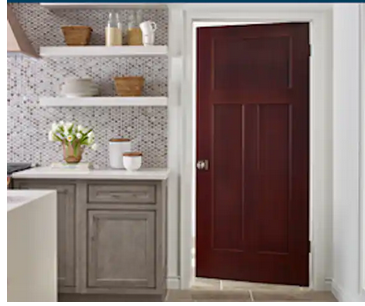Question
ntroduction: A European architect (Klemens Torggler) has come up with a new concept for a door. Suppose that a big box retailer in Mexico (Deposito
ntroduction:A European architect (Klemens Torggler) has come up with a new concept for a door. Suppose that a big box retailer in Mexico (Deposito de Casa)is considering buying the rights to this concept and then manufacturing the door to sell here in the in the Mexican market. f they can beat their competition to the market and because they will have exclusive rights, the BBR believes they will provide a product their customers will like and selling this product will increase their profits. You can see a video of this concept by clicking on the following link: https://www.youtube.com/watch?v=_XOCDLrfwh8 .
As you saw in the video, this concept uses two plates that are connected together using links so that the two halves of the door rotate back and forth. The door is designed to, when open, pivot out of the way, so does not require as much free, uncluttered space as a standard hinged door. This concept appears to have the advantage of having the masses of the two major halves of the door balance each other as they move.
As an engineer, you have been hired by BBR to evaluate this design with the specific question in mind: s this new door easier to open than the current standard door? To make this evaluation, you will compare the moment of inertia () for a standard hinged door vs. this new concept.
To do "apples to apples" comparison, we need some assumptions:
- Assume that the combined weight of the two half doors is the same as a standard U. S. interior door. Yes, the halves of the door in the video are made of steel but our production ones won't be. According to a BBR website, one of their current interior doors weighs 70 lb. including the frame, so let's assume the moving portion of the door weighs 60 lb. Also, assume the doors are homogeneous and uniform.
- Assume that the width of both doors is the same, 36" wide. A door that functions as in the video will have to be wider to fully cover the opening, but for the sake of our quick analysis, let's go with 36".
- Assume the combined height of the two half doors is the same as the height of a standard interior door, 80", so each half is 40" tall. Again, we would have to cover the opening, so the real ones will have to be taller, but let's go with 40" for each half.
- Assume the halves of the doors pivot in the corner of the door. Again, the actual pivot would have to be inset from the corner?no worries at this point.
- Let's assume the hardware: pivots, linkages, holes in the door, etc. are not there. We just want to compare the moment of inertia of a standard door to the combined moments of inertia of the two halves of the new concept.
- (15 pts) Let's start with a standard door. Below is a picture of a one from homedepot.com. What is the moment of inertia of this door about the hinges (not the center of mass) as a function of its mass "m," and width "w"? Also, provide as a number.

I
Step by Step Solution
There are 3 Steps involved in it
Step: 1

Get Instant Access to Expert-Tailored Solutions
See step-by-step solutions with expert insights and AI powered tools for academic success
Step: 2

Step: 3

Document Format ( 2 attachments)
6642d8e83ace1_973648.pdf
180 KBs PDF File
6642d8e83ace1_973648.docx
120 KBs Word File
Ace Your Homework with AI
Get the answers you need in no time with our AI-driven, step-by-step assistance
Get Started


